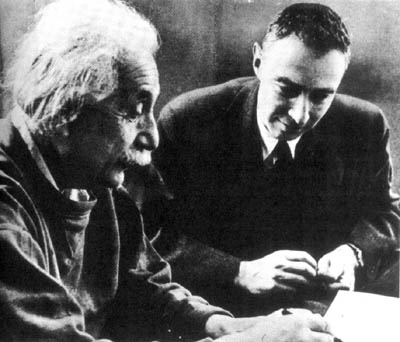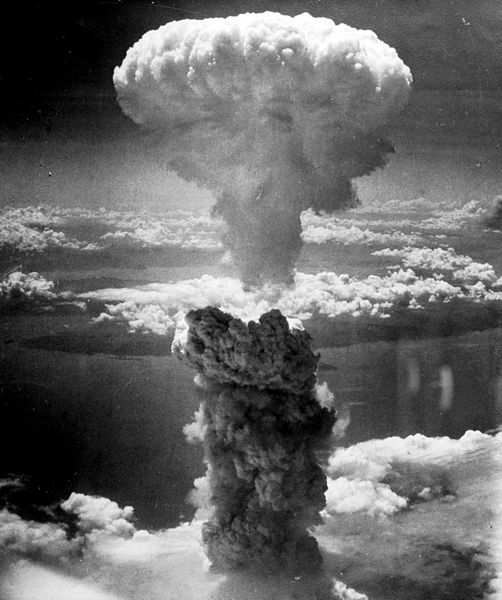After you watch videos please create a 5-7 bullet summary of each video All summaries are due by Saturday 3/21
Please title each Summary based on the video title. this will take you up to the end of the war
Please read the following and answer the questions that follow
The Manhattan Project and the atomic bomb
In 1945, the United States dropped two atomic bombs on Japan, ending World War II.
Overview
- The United States detonated two atomic bombs over the Japanese cities of Hiroshima and Nagasaki in August 1945, killing 210,000 people—children, women, and men.
- President Truman authorized the use of the atom bombs in an effort to bring about Japan’s surrender in the Second World War. In the days following the bombings Japan surrendered.
- The Manhattan Project was the US government program during World War II that developed and built these first atomic bombs.
- The detonation of these first nuclear bombs signaled the arrival of a frightening new Atomic Age.
The Manhattan Project
The Manhattan Project was the codename for the secret US government research and engineering project during the Second World War that developed the world’s first nuclear weapons. President Franklin Roosevelt created a committee to look into the possibility of developing a nuclear weapon after he received a letter from Nobel Prize laureate Albert Einstein in October 1939. In his letter, Einstein warned the president that Nazi Germany was likely already at work on developing a nuclear weapon. By August 1942, the Manhattan Project was underway.start superscript, 1, end superscript
By 1944, six thousand scientists and engineers from leading universities and industrial research labs were at work on the development of the world’s first-ever nuclear weapon. Robert Oppenheimer, a physicist, headed the Los Alamos National Laboratory, the Manhattan Project’s principal research and development facility. For security reasons, the facility was located in the desert near Los Alamos, New Mexico.
Major General Leslie Groves oversaw the Manhattan Project for the US government. Private corporations, foremost among them DuPont, helped prepare weapons-grade uranium and other components needed to make the bombs. Nuclear materials were processed in reactors located in Oak Ridge, Tennessee and Hanford, Washington. At its peak, the Manhattan Project employed 130,000 Americans at thirty-seven facilities across the country.
On July 16, 1945 the first nuclear bomb was detonated in the early morning darkness at a military test-facility at Alamogordo, New Mexico. The intense brightness of the explosion’s flash was followed by the rise of a large mushroom cloud from the desert floor. House windows more than fifty miles away shattered.
Hiroshima and Nagasaki
In May 1945, the Allies defeated Germany, two months before the atomic bomb was complete. War with Japan continued, however, and In August 1945 it seemed that an invasion of Japan itself might be necessary to force the Japanese to surrender. Military advisers to President Harry S. Truman warned that such a ground war would result in the deaths of tens or hundreds of thousands of young men in the US Armed Forces, as well as the deaths of many Japanese military personnel and civilians. After receiving no reply to his threat that "prompt and utter destruction" would follow if the Japanese did not surrender unconditionally, Truman authorized the use of the bomb on Japan.squared
On August 6, 1945 an American B-29 bomber named the “Enola Gay” dropped the first atomic bomb on the city of Hiroshima. The device exploded over the city with a force of 12,500 tons of TNT. “[The city] had been there just a few minutes before . . . but it was absolutely gone,” said one witness. About 140,000 people were killed instantly or died due to injury or radiation poisoning within months of the blast at Hiroshima.cubed
Truman called for surrender the day after the bombing at Hiroshima once more, but once more the Japanese government refused. On August 9, about 80,000 people died after the United States dropped a second bomb on the Japanese city of Nagasaki. A total of 210,000 civilians died in the two atomic blasts. (In comparison, the United States had killed 120,000 Japanese civilians with conventional bombs during air raids on Tokyo in March 1945.)start superscript, 4, end superscript
Six days later, after the Soviet Union declared war on Japan, the Japanese government signed an unconditional surrender. World War II was over.
The development of the atomic bomb had repercussions that would continue to resonate throughout the twentieth century, particularly in the Cold War. Spies within the research and development facility at Los Alamos—most notably the scientist Klaus Fuchs—gave the Soviet Union information about the nuclear program that helped the Soviets develop their own atomic weapon by 1949.start superscript, 5, end superscript
Was the bombing of Hiroshima and Nagasaki necessary?
Truman’s decision was framed by his belief that the bombing of Hiroshima and Nagasaki would shorten the war and thereby save the lives of tens or hundreds of thousands of American soldiers as well as untold numbers of Japanese soldiers and citizens.
However, in the years following the war—and to this day—the United States’ use of nuclear bombs against the civilian populations of Hiroshima and Nagasaki has had both proponents and detractors. Many questions remain about the necessity of using the bomb and its moral implications: Would the United States have acted so quickly to use nuclear weapons against Europeans? Was racism against the Japanese an element in the decision? Might the United States have exploded a nuclear bomb on an uninhabited island to demonstrate the bomb’s terrible power instead of destroying two cities? Might the United States have been able to gain Japan’s unconditional surrender by other means?
But there was no question that the development and use of the atomic bomb changed the nature of world warfare forever. Though the bombings of Japan remain the only wartime use of nuclear weapons, since 1945 the threat of nuclear war has loomed over international conflicts, promising a level of "prompt and utter destruction" never before seen in the world.
Questions (3 quiz Grades due Sunday 3/22)
1. What might have happened if Nazi Germany had developed a nuclear weapon before the United States?
2. In what ways did scientists, engineers, corporate leaders, American workers, and the military come together in shaping the successes of the Manhattan Project?
3.Was the decision to drop the atom bombs on civilians morally justifiable?































No comments:
Post a Comment